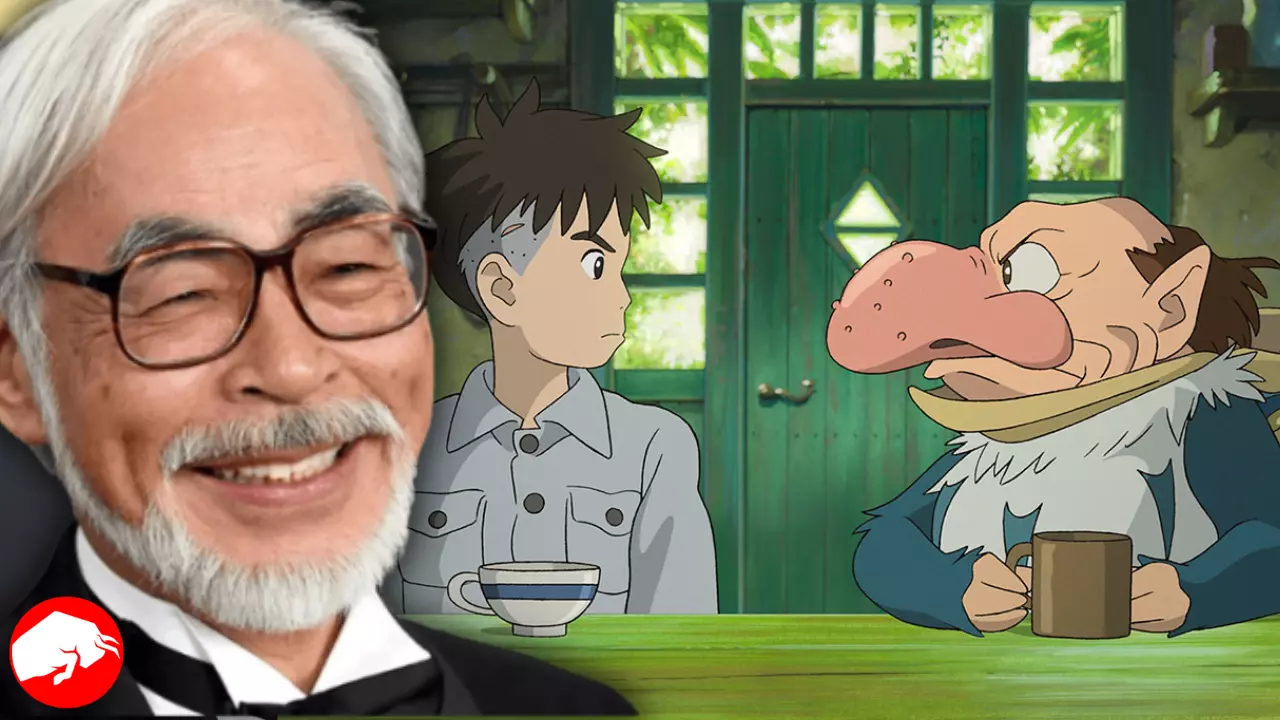Studio Ghibli, the esteemed animation studio that has captivated audiences around the world with its enchanting tales and unparalleled artistry, has once again found itself in the center of public attention. Recognized for producing some of the most iconic and beloved animated films in cinematic history, such as Spirited Away and My Neighbor Totoro, Ghibli has left an indelible mark on the hearts of both children and adults.
However, this time, the buzz isn’t solely about a new release, but rather the unique approach taken for its promotion. The legendary filmmaker Hayao Miyazaki, who has been the driving force behind many of Ghibli’s masterpieces, has unveiled his latest creation, titled The Boy and the Heron. But what’s particularly intriguing is the unorthodox marketing strategy accompanying its release in Japan. Instead of following the traditional promotional pathways that most major films adhere to, Miyazaki and Studio Ghibli have opted for a fresh and distinctive approach, piquing the interest of fans and industry insiders alike.
Going Against the Grain: No Promotions, No Still Images

In today’s entertainment landscape, filmmakers and studios inundate audiences with extensive promotions, including trailers, teasers, and poster campaigns designed to generate excitement and anticipation. This approach is almost a standard, as marketing is believed to be crucial to a film’s success. However, the legendary Hayao Miyazaki, known for his unconventional methods, chose to take a completely different route. Rather than following the established norm, he decided to keep his fans on the edge of their seats by withholding promotional materials for his summer release in Japan. This absence of promotional images, trailers, or even mere glimpses was a bold and almost unheard-of move in the fiercely competitive film industry.
This strategy not only left his fans curious but also created an air of mystery around the project, fueling speculation and conversations across various platforms. As the film now gears up for its much-anticipated U.S. release, the suspense has built up to a crescendo. Adding to the fervor, Miyazaki recently surprised his fans with a unique revelation – not just a regular teaser, but a teaser with an unexpected twist. This has only amplified the buzz, proving once again that sometimes, less is indeed more.
The Not-So-Traditional Pre-Teaser

Hayao Miyazaki, renowned for his imaginative storytelling and compelling animation, has always had a unique approach to introducing his works to international audiences, particularly in the U.S. market. As the eagerly awaited film gears up for its premiere in North America at the prestigious Toronto International Film Festival, fans and critics were treated to a fresh teaser. But this wasn’t the kind of preview many would expect. Straying from the conventional norms, the teaser did not include any actual footage from the film.
Instead, it was more of a mysterious and evocative hint, skillfully crafted to ignite curiosity about what the movie might entail. This intriguing move suggests that a more detailed trailer might be just around the corner. As GKids, the distributor, intriguingly phrased it, this initial “pre-teaser” is merely a precursor to the “first official English language teaser trailer,” which is slated to be released on September 6.
Such an unconventional approach may seem puzzling to some, especially in an era where trailers often spill the major plot points. However, for audiences tired of trailers that leave little to the imagination, this strategy is refreshingly apt. It maintains the enchanting element of surprise, fostering a palpable sense of excitement and heightening the allure of the undiscovered. This strategy is a testament to Miyazaki’s belief in letting the viewers’ imagination flourish and his commitment to preserving the essence of cinematic wonder.
A Necessary Middle Ground in Hollywood?

Miyazaki’s decision to take a leap of faith with his unique promotional approach certainly has its fair share of skeptics. In the bustling U.S. film industry, the urgency to market a film effectively cannot be overstated, especially when considering the towering reputations of stalwart filmmakers like George Lucas and Steven Spielberg. These are individuals who have, for decades, shaped the way movies are made and consumed. While there’s an undeniable allure to stepping into a theater without any preconceived notions about the film’s visuals or narrative, this romanticized idea is frequently at odds with the cutthroat realities of the movie business.
Yet, in this challenging landscape, Miyazaki’s strategic choice to tease his audience without laying all his cards on the table is truly commendable. This approach not only respects the intelligence of the audience but also harkens back to the time-honored traditions of storytelling. In such tales, the story would unfold gradually, ensuring that the listener remains enraptured by the building sense of mystery and anticipation. Through this method, Miyazaki ensures that the art of storytelling, with its slow revelations and preserved mystique, remains very much alive in the modern cinematic world.
What’s Next for The Boy and the Heron?

Having achieved monumental success on the global stage with cinematic masterpieces such as My Neighbor Totoro, Princess Mononoke, and the Oscar-winning Spirited Away, anticipation is building rapidly for Studio Ghibli’s next piece of art. Titled The Boy and the Heron, this latest creation is set to premiere in Toronto on September 6. While the exact date for its comprehensive U.S. release still remains a mystery, leaving fans on the edge of their seats in excitement, it’s certain that the wait will be worth it.
Hayao Miyazaki, the maestro behind many of Studio Ghibli’s most iconic films, has always found ways to captivate his audience. As we look forward to experiencing the magic he is set to weave on the silver screen once more, it’s impossible not to notice his distinctive promotional methods. These tactics, far from being mere marketing gimmicks, stand as an embodiment of Miyazaki’s unyielding dedication to safeguarding the wonder and mystique of cinema. His passion goes beyond storytelling; it’s about preserving the very essence of what makes movies a source of awe and inspiration for countless viewers around the world.









